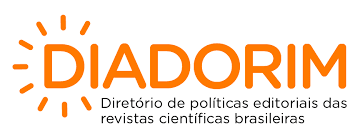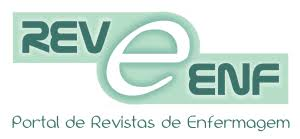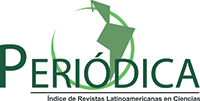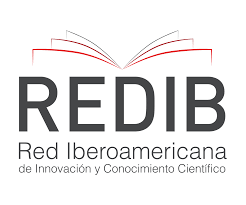PREPARATION OF INTRAMUSCULAR DRUGS IN PEDIATRICS: NURSING TEAM
DOI:
https://doi.org/10.5380/ce.v21i5.45619Keywords:
Nursing, Intramuscular Injections, Hospital Medication Systems, Pediatrics, Patient Safety.Abstract
The objective of this study was to analyze work by a nursing team regarding the environmental organization, preparation and dilution of drugs administered intramuscularly in a pediatric setting. This was an observational and quantitative study developed through 327 observations of the preparation of intramuscular medication from December 2014 to May 2015 in a pediatric hospital in Fortaleza, in the state of Ceará. Observations employed a two-stage checklist: organization of the environment with four actions; preparation and dilution of medications with 12 actions. For organization of the environment, performance regarding the action of organizing the bench with a count of 231 (70.6%) was satisfactory. The stage of medication preparation and dilution achieved satisfactory performance in six actions: separation of cotton balls soaked with alcohol from dry ones with 252 (77%); selection of syringe compatible with the volume to be administered with 264 (80.7%); proper selection of the needle for aspiration with 233 (71.2%); needle for administration with 320 (97.8%); change of needle after preparation with 266 (81.3%); reconstitution of medication in distilled water with 327 (100%). This allowed for the identification of weaknesses, such as observing the sell-by date of medications and identifying the medications prepared, actions that interfere with the safe administration of medications in pediatrics.
References
Harada MJCS, Pedreira MLG. O erro humano e sua prevenção. In: Agência Nacional de Vigilância Sanitária. Assistência Segura: Uma Reflexão Teórica Aplicada à Prática. Brasília: ANVISA; 2013. p. 41-55.
Filho FMA, Martins IMS, Soares CSRS, Fazendeiro PG, Paranaguá TTB, Bezerra ALQ. Administração de medicamentos: conhecimento de enfermeiros do setor de urgência e emergência. Enferm. glob. [Internet] 2012; 11(26) [acesso em 28 fev 2016]. Disponível: http://scielo.isciii.es/pdf/eg/v11n26/pt_clinica5.pdf
Brasil. Lei n. 7.498, de 25 de junho de 1986. Dispõe sobre a Regulamentação do Exercício da Enfermagem e dá outras providências. Diário Oficial da República Federativa do Brasil, Brasília, 25 jun. 1986. Seção 1:1.
Ferreira FLC, Fernandes G, Fonseca PML, Christoffel MM. Terapia intravenosa em neonatologia e na pediatria: uma revisão sistemática da literatura. Revista de Pesquisa: Cuidado é Fundamental Online. [Internet] 2010; Suppl 2 [acesso em 28 fev 2016]. Disponível: http://www.seer.unirio.br/index.php/cuidadofundamental/article/view/838/pdf_99
Silva AEBC. Análise de risco do processo de administração de medicamentos por via intramuscular em pacientes de um Hospital Universitário de Goiás [tese]. Ribeirão Preto (SP): Escola de Enfermagem de Ribeirão Preto; 2008.
Cançado RD, Lobo C, Friedrich JR. Tratamento da anemia com ferro ferropriva com ferro por via parenteral. Rev. Bras. Hematol. Hemoter. [Internet] 2010; 32(2) [acesso em 28 fev 2016]. Disponível: http://www.scielo.br/pdf/rbhh/v32s2/aop66010.pdf
Portela JL, Piva JP. Midazolam versus diazepam para tratamento de estado de mal epiléptico em emergência pediátrica. Scientia Medica. [Internet] 2011; 21(4) [acesso em 28 fev 2016]. Disponível: http://revistaseletronicas.pucrs.br/ojs/index.php/scientiamedica/article/view/9176/7244
Belela ASC, Peterlini MAS, Pedreira MLG. Revelação da ocorrência de erro de medicação em unidade de cuidados intensivos pediátricos. Rev. Bras. Ter. Intensiva. [Internet] 2010; 22(3) [acesso em 28 fev 2016]. Disponível: http://www.rbti.org.br/artigo/detalhes/0103507X-22-3-7
Torres MM, Andrade D, Santos CB. Punção venosa periférica: avaliação de desempenho dos profissionais de enfermagem. Rev Latinoam Enferm. [Internet] 2005; 13(3) [acesso em 28 fev 2016]. Disponível: http://www.revistas.usp.br/rlae/article/view/2085/2170
Peduzzi M, Anselmi ML, França IJ, Santos CB. Qualidade no desempenho de técnicas dos trabalhadores de enfermagem de nível médio. Rev Saúde Pública. [Internet] 2006; 40(5) [acesso em 28 fev 2016]. Disponível: http://www.scielosp.org/pdf/rsp/v40n5/14.pdf
Camerini FG, Silva LD. Segurança do paciente: análise do preparo de medicação intravenosa em hospital da rede sentinela. Texto Contexto Enferm. [Internet] 2011; 20(1) [acesso em 28 fev 2016]. Disponível: http://www.index-f.com/textocontexto/2011pdf/20-041.pdf
Graziano MU, Graziano KU, Pinto FMG, Bruna CQM, Souza RQ, Lascala CA. Eficácia da desinfecção com álcool 70% (p/v) de superfícies contaminadas sem limpeza prévia. Rev. Latino-Am. Enfermagem. [Internet] 2013; 21(2) [acesso em 28 fev 2016]. Disponível: http://www.revistas.usp.br/rlae/article/download/75965/79483
Assad C, Reinehr E, Siliprandi EMO, Costa G. Limpeza e desinfecção de superfícies. In: Agência Nacional de Vigilância Sanitária. Segurança do paciente em serviços de saúde: limpeza e desinfecção de superfícies. Brasília: ANVISA; 2010. p. 72.
Agência Nacional de Vigilância Sanitária. Luvas cirúrgicas e luvas de procedimentos: considerações sobre o seu uso Boletim Informativo de Tecnovigilância – Brasília. 2011. [acesso em 28 fev 2016]. Disponível: http://www.anvisa.gov.br/boletim_tecno/boletim_tecno_Junho_2011/PDF/Luvas%20Cir%C3%BArgicas%20e%20Luvas%20de%20Procedimentos_Considera%C3%A7%C3%B5es%20sobre%20o%20uso.pdf
Conselho Regional de Enfermagem de São Paulo. Parecer COREN-SP 042/2014–CT. Ementa: utilização de luvas de procedimentos para aplicação de vacina. São Paulo; 2014.
Rosa MB, Perini E, Anacleto TA, Neiva HM, Bogutchi T. Erros na prescrição hospitalar de medicamentos potencialmente perigosos. Revista de Saúde Pública. [Internet] 2009; 43(3) [acesso em 28 fev 2016]. Disponível: http://www.scielo.br/pdf/rsp/v43n3/7265.pdf
Santana JCB, Sousa MA, Soares HC, Avelino KSA. Fatores que influenciam e minimizam os erros da administração de medicamentos pela equipe de enfermagem. Revista Enfermagem Revista. [Internet] 2012; 15(1) [acesso em 28 fev 2016]. Disponível: http://periodicos.pucminas.br/index.php/enfermagemrevista/article/view/3300/3657
Veloso IR, Telles PCP, Durão AMS. Identificação e análise de erros no preparo de medicamentos em uma unidade pediátrica hospitalar. Rev. Gaúcha Enferm. [Internet] 2011; 32(1) [acesso em 28 fev 2016]. Disponível: http://www.scielo.br/pdf/rgenf/v32n1/a12v32n1.pdf
Cardoso SR, Pereira LS, Souza ACS, Tipple AFV, Pereira MS, Junqueira ALN. Anti-sepsia para administração de medicamentos por via endovenosa e intramuscular. Rev. Eletr. Enf. [Internet] 2006; 8(1) [acesso em 28 fev 2016]. Disponível: https://www.fen.ufg.br/fen_revista/revista8_1/original_10.htm
Lippert WC, Wall EJ. Optimal Intramuscular Needle-Penetration Depth. Pediatrics: Official Journal of the American Academy of Pediatrics. [Internet] 2008; 122 (3): 556-563.
Hockenberry MJ, Wilson D. WONG, Fundamentos de Enfermagem Pediátrica. 9ª ed. Rio de Janeiro: Elsevier, 2014.
Fassarella CS, Bueno AAB, Souza ECC. Segurança do paciente no ambiente hospitalar: os avanços na prevenção de eventos adversos no sistema de medicação. Revista Rede de Cuidados em Saúde. [Internet] 2013; 7(1) [acesso em 28 fev 2016]. Disponível: http://publicacoes.unigranrio.br/index.php/rcs/article/viewFile/1897/907
Miasso AI, Cassiani SHB. Erros na administração de medicamentos: divulgação dos conhecimentos e identificação do paciente como aspectos relevantes. Rev Esc Enfermagem USP. [Internet] 2000; 34(1) [acesso em 28 fev 2016]. Disponível: http://www.scielo.br/pdf/reeusp/v34n1/v34n1a03.pdf
Downloads
Published
How to Cite
Issue
Section
License
Cogitare Enfermagem reserves the right to make normative, orthographic, and grammatical changes to the published article to maintain the cultured standard of the language, while respecting the authors' style.
The published study is the sole responsibility of the author(s), and Cogitare Enfermagem is exclusively responsible for evaluating the manuscript as a scientific publication vehicle. Revista Cogitare Enfermagem is not responsible for any violations of Law No. 9,610/1998, the Brazilian Copyright Law.
Cogitare Enfermagem allows the author to hold the copyright of articles accepted for publication, without restrictions.
The articles published are licensed under the Creative Commons license CC BY 4.0 Creative Commons - Attribution 4.0 International - CC BY 4.0 - The attribution adopted by Cogitare Enfermagem is permitted:
- Share - copy and redistribute the material in any media or format.
- Adapt - remix, transform and build upon the material for any purpose, even commercially.
- Attribution - You must give proper credit, provide a link to the license, and indicate if changes have been made. You may do this in any reasonable way, but not in a way that suggests that the licensor endorses it or approves of its use.
- No additional restrictions - You may not apply legal terms or technological measures that legally restrict others from doing something that the license allows.




















